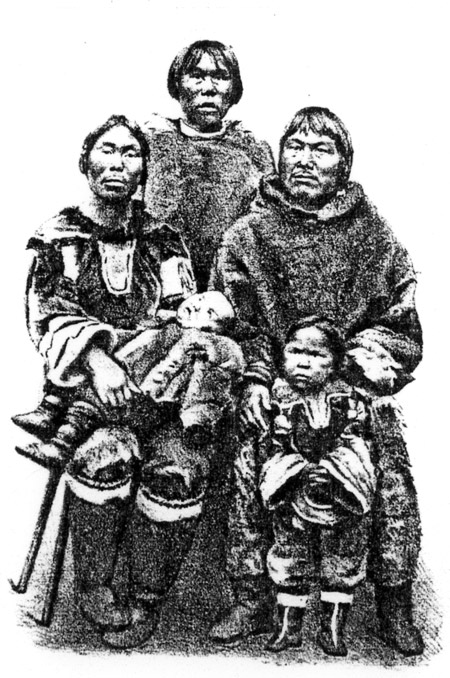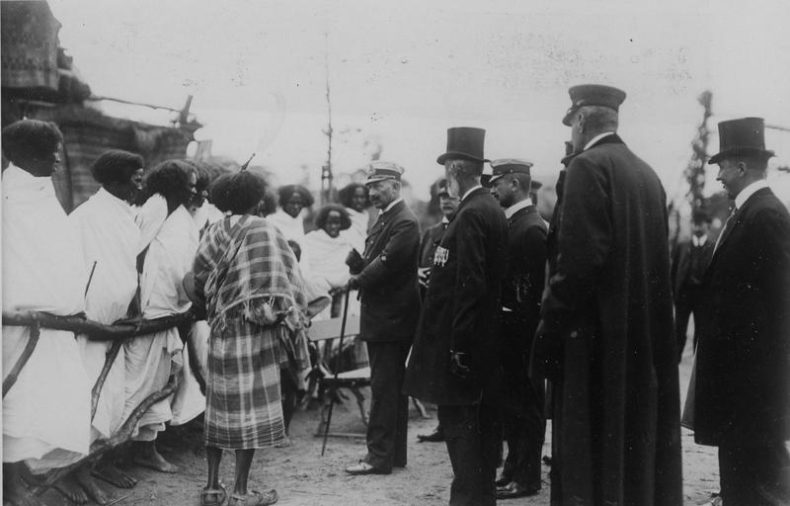Last week I roamed the trails of the Zurich Zoo with my son. The new elephant exhibit, we heard, included an underwater window in which one could watch the elephantine legs paddling. As a tourist attraction, though, a world-class zoo is pretty much the same wherever you go, and it wasn’t exactly a thrilling day. More eerie was the thought that the ghost of zoos past haunt these exhibits.
For one thing, the treatment of captive animals has been subject to changing values, but the definition of an animal suitable for captivity has also changed. Along with many other European cities, Zurich in the 19th Century – though not this particular zoo, which opened in 1929 – played host to “anthropo-zoological exhibits” alongside their animal exhibits. People, in other words. As zoo animals.
More than 35,000 Indigenous people, over the course of 50 years, were recruited from around the world and displayed in enclosures for the satisfaction of thousands of top-hatted European zoo visitors. One of these human zoo animals, an Inuk named Abraham Ulrikap, kept a diary.
In his home community, 200 people in Labrador, Ulrikap learned to read and write in Inuktitut from Moravian missionaries. He also learned a little English and German. At age 35, he was very interested in visiting Europe to see for himself the buildings and people there. Ulrikap’s father had recently died, and when he was approached with the offer of a one-year contract as a demonstrator of his people’s way of life, he took the chance, writing that it might be a way out of the debt incurred during his father’s illness.
Two families, a total of eight Inuit, spent 32 days at sea to reach Hamburg in 1880. It was the law at the time that anyone brought into Germany must be vaccinated against smallpox, but this did not happen. Instead, after having being photographed in full cultural regalia, they were taken to their place in the zoo where at an appointed hour every day—much like feeding time in modern zoo exhibits—they would spear a seal in a pond and skin it.
Ulrikap quickly realized he had made a bad decision, both for himself and for his family. Europe was chaotic and noisy, and the estimated 17,000 people who crowded around his enclosure on a given day were not adequately controlled. Once his supervisors were afraid they would all be trampled, and Ulrikap had to put on a fierce face and threaten the crowd with his harpoon to drive them off.
The human zoo exhibit was a traveling one, puffing by steam train to Berlin, Prague, Dresden, Paris, London and Vienna. They were subjected to phrenological measurements to add data points to the dubious science of categorizing people’s character and behavior based on their facial features and skull shape.
Then, disaster struck. Ulrikap’s diary tells of a fifteen-year-old member of the Inuit group who became ill with smallpox and died. A few days later, her mother died, too. Then, Ulrikap’s three-year-old daughter came down with it. Between Christmas and New Year’s the three died, and the surviving five were vaccinated. But it was too late – they all died of smallpox in Paris.
Even as Abraham Ulrikap’s diary ended, a new journey was beginning for his bodily remains. Author France Rivet had read the diary but felt that much remained unanswered, particularly the end of the story after Ulrikab died. She reports her findings in In the Footsteps of Abraham Ulrikab and brought the story to the attention of the current Nunatsiavut Government. The three who died first had their brains cast for plaster models. The other five were initially buried in a cemetery but later exhumed for anatomical study. Ulrikab’s mounted skeleton was put on display in the Batiment de la Balein. In June 2013 the French and Nunatsiavut Governments signed an agreement to start the process of repatriation. It remains undecided whether the community would like to bring them over.
Ulrikap writes of his dreams of seeing his relatives again, and a current resident of his community visiting his body in storage in Paris was horrified to see his skeleton propped up vertically with a metal stand, seemingly in a mockery of a living human. When his body settles into a more suitable resting place, his diary will remain as a rare voice for those whose humanity we deny.
Photos: Ethiopian exhibit in Hamburg (put on by Carl Hagenbeck, the same promoter who employed Ulrikab)
Abraham Ulrikab (right) with his wife, two daughters and nephew.

Thanks! We need to be reminded of how we have thought and acted in the past. I like to think people (or values) have changed. But ……